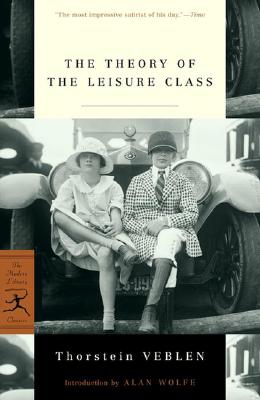The Theory of the Leisure Class
Thorstein Veblen

Reading this book was one of those interesting experiences in which the author’s arguments seem obvious, but only because they were so insightful that they have become commonplaces. Veblen originated the concept of “conspicuous consumption” in this book, that is, consumption that is at least partially oriented not toward the direct utility generated by the act of consumption, but toward the status associations generated by the act of consumption. Flashy cars, etc.
I am glad to have read this book, but I can’t say that I am wholly convinced by Veblen’s arguments. First of all, many of his arguments rest on what I would call “just-so stories”–accounts of the genealogy of certain aspects of contemporary society, based on how primitive societies operated. They certainly have an air of plausibility to them, but I do not think Veblen is really drawing on any empirical evidence so much as conducting thought experiments. (Contrast, for example, David Graeber’s arguments in “Debt,” which are of a similar flavor but which are extensively sourced in academic anthropological studies.) I couldn’t avoid feeling like Veblen could have made equally plausible arguments for opposite cases.
Second, Veblen is deeply cynical, in a way that is hard for me to get on board with. He sees elements of “conspicuous waste” in virtually every act. He acknowledges that there is often an admixture of less superficial motives (e.g. true care for workmanship), but it is abundantly clear which way he thinks the balance tips. (His general position is that people’s choices are usually not consciously motivated by “invidious comparison,” but that the societal pressure for invidious comparison sets constraints on what activities become accepted in society.) Moreover, I think there is an element of tautology in his arguments about conspicuous waste. He seems to see any activity that goes beyond providing for basic human sustenance as conspicuous waste. But if that is the case, then it hardly seems like a useful analytical concept. Any society that goes beyond a bare Malthusian sustenance minimum is going to be characterized by conspicuous waste in Veblen’s view. “Activities going beyond the subsistence minimum” could equally well be characterized as “human flourishing.”
All that said, I think it is an important book, and one that introductory economics students could benefit from reading (at least parts of). Most all of economics takes preferences and utility functions as given and unquestionable, but Veblen indicates some important ways that they are shaped by the institutions of a society. Having just read “Limits to Growth,” I think some deep questions are raised when a culture of conspicuous consumption begins to encounter basic physical constraints.